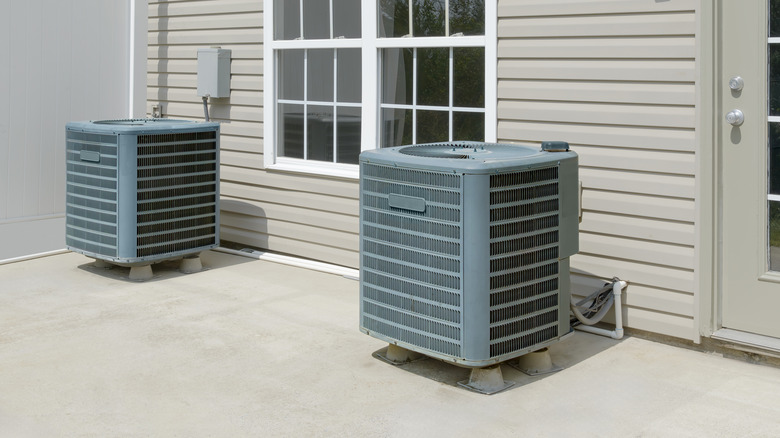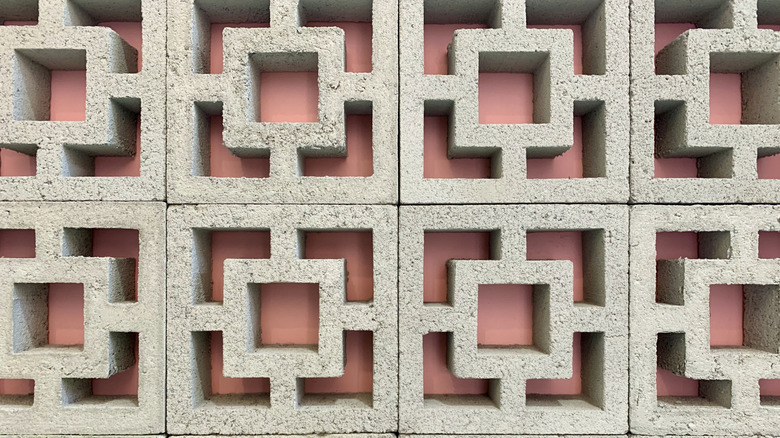The Affordable Way To Hide An Unsightly AC Condenser On Your Patio
There are several creative ways to conceal an air conditioning unit, but finding one that's affordable and stylish may be challenging for some. So, how can you create a hidden design feature that won't jeopardize the condenser's functionality, and is large enough to hide the sizable appliance, while blending in with the patio's aesthetic? Simple: Build breeze block walls. These blocks can create a faux fence, hiding the AC unit in plain sight while allowing enough airflow to circulate for operational efficiency.
So, what are breeze blocks? These are decorative concrete blocks that were popularized between the 1920s and 1970s as a stylish way to minimize direct sunlight, provide privacy, and allow ventilation around home exteriors. They come in various sizes, shapes, and colors. For example, some blocks may measure 7.5 x 7.5 x 3 inches, while larger ones may be 11.4 x 11.4 x 3.5 inches. Their prices can also vary, with some starting as low as $7 and others going as high as $34 per piece. Installing them can be a simple or involved process, depending on your approach.
With this simple, small build, you can save money by stacking the blocks and bonding them together with construction adhesive. Your average AC condenser is about 30 to 45 inches tall, 30 to 40 inches wide, and 28 to 35 inches deep. So, the costs of purchasing blocks (the main project cost) that can cover a smaller condenser on two sides may start around $217, and on three sides, around $322. A significantly bigger or more complex approach will likely require additional tools and materials such as grout, rebar, spacers, and other supportive elements.
How to build a breeze block condenser cover
If you decide to build the wall yourself, it's recommended that you plan for the transportation of the concrete blocks, as they can be quite heavy in batches. Also, before shopping for blocks, be sure to measure your AC condenser unit to determine how many you'll need to cover it fully. Note that you'll want to leave an adequate amount of space between the wall and the unit to allow for easy repair access or when replacement of the air conditioning unit may be required.
In addition to the breeze blocks, you'll need a few materials and tools for the DIY build, including Loctite construction adhesive (or another adhesive suitable for concrete), heavy-duty gloves, and measuring tape. After you've procured your blocks and taken your measurements, pre-fit the blocks to ensure proper alignment. Next, you're essentially going to stack your breeze blocks one row at a time. Apply the construction adhesive in a zigzag pattern to the top of each block before adding another one on top of it. Also, be sure to apply adhesive to the sides of each new block as well. Press each newly laid block down firmly for a secure bond. Allow the adhesive to dry before decorating your wall.
Once it's dried, consider painting the wall to upgrade your patio's aesthetic, or perhaps adding a few climbing plants to some areas. You can also mix and match different breeze block styles for a more chic or curated feel. Adding a couple of rows of string lights is another way you can bring a bit more creativity to your wall.

